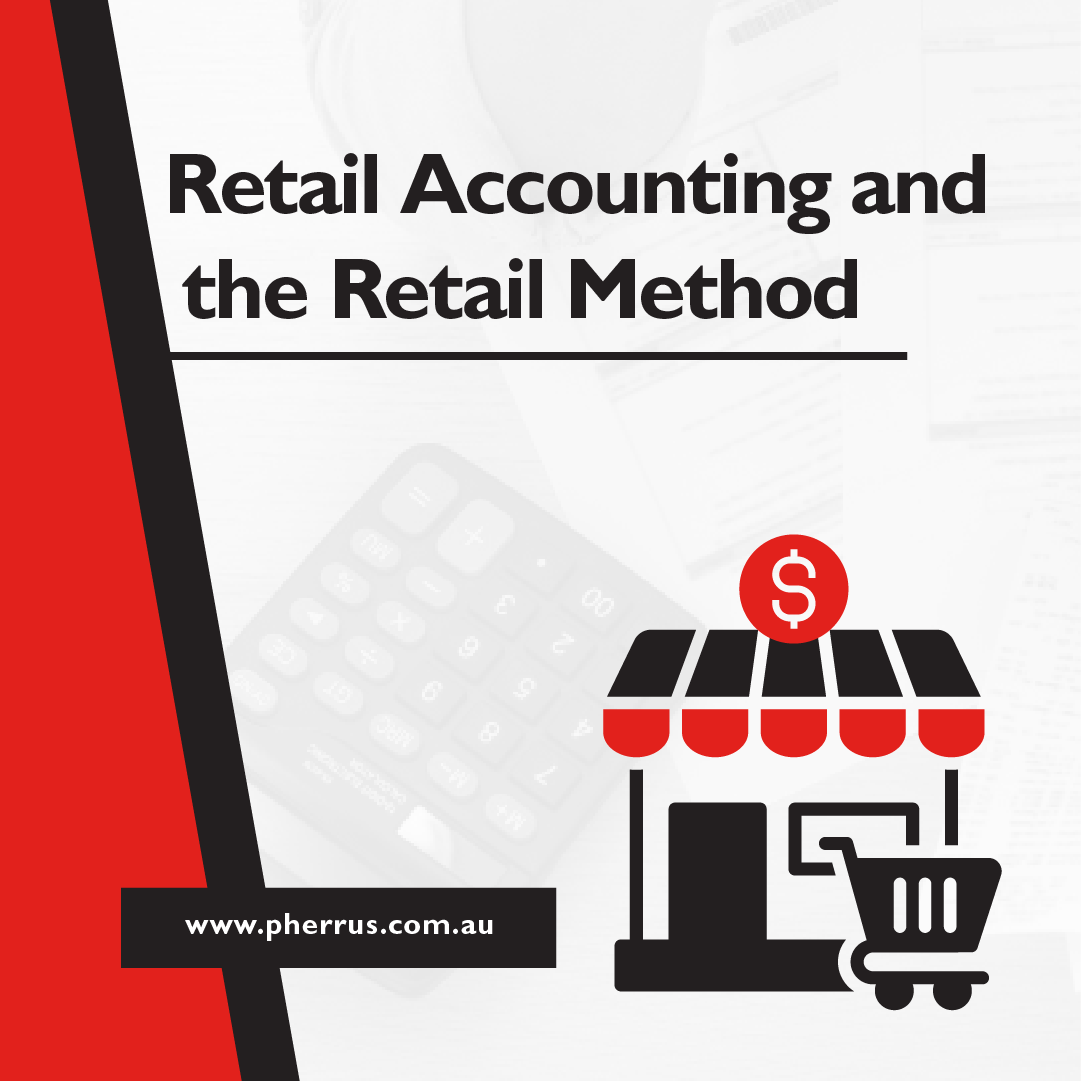You’re great at running your store: keeping customers happy, managing stock, and making sales.
But when it comes to accounting, it’s a different story.
One look at your financial reports, and you’re thinking, Why does this all look like a foreign language?
If you’ve ever struggled with inventory numbers that don’t match, profit margins that don’t make sense, or tax time headaches, you’re not alone.
Retail accounting can feel overwhelming, but getting it right is crucial for your business’s success.
Enter Pherrus Financial Services!
We help Australian retailers—both online and in-store—take control of their finances through thorough, expert retail accounting.
What is retail in accounting terms?
In this guide, we’ll answer that question, explain the retail method, and show how we can help you stay on top of your finances without the stress.
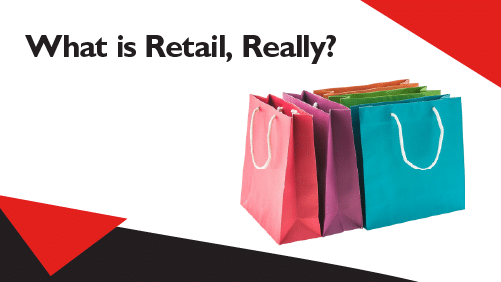
What is Retail, Really?
If you’re new to the industry, you may be wondering if your business definitely classifies as “retail”.
Simply put, if you sell goods or services to individual customers, you’re in retail!
How does retail differ from wholesale?
Wholesalers sell in bulk to other businesses, often at lower prices per unit.
On the other hand, retailers buy from wholesalers or manufacturers and sell in smaller quantities to the end customer at a markup.
Retail comes in many forms, from physical stores to online shops.
- Clothing and fashion
- Beauty and wellness
- Electronics
- Furniture and homewares
- Hospitality
- E-commerce general retail stores and marketplaces
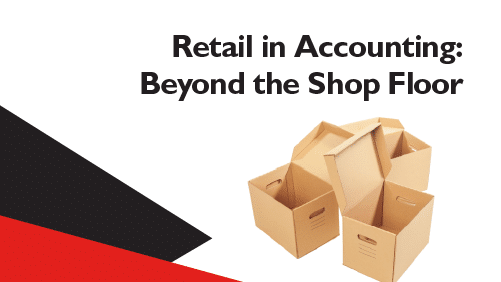
Retail in Accounting: Beyond the Shop Floor
What is retail in accounting terms?
In addition to selling products as a retailer, you have to juggle expenses, stock, and profits.
Retail accounting refers to managing these financial processes and any others involved in running a retail business.
“Other processes” can include
- Revenue: The total sales made from products or services.
- Cost of Goods Sold (COGS): The cost of purchasing or producing the items you sell.
- Gross Profit: Revenue minus COGS equals how much you make before expenses.
- Expenses: Operating costs like rent, wages, marketing, and utilities.
- Inventory Management: Tracking stock levels to prevent overordering or running out.
- Taxes: GST, income tax, payroll tax, superannuation contributions, and BAS (Business Activity Statements) reporting.
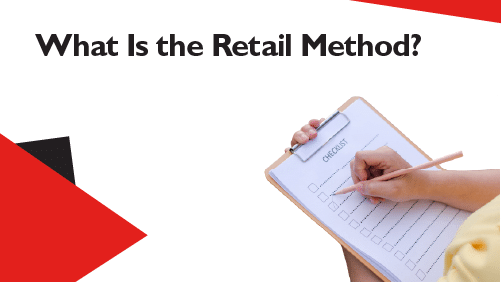
What Is the Retail Method?
One of the biggest challenges in retail accounting is valuing inventory, as stock levels are constantly changing.
Why?
- Sales
- New stock arrivals
- Price fluctuations (supplier costs, discounts, and promotions)
- Shrinkage (theft, damage, and lost items)
- Customer returns and exchanges
This is where the retail inventory method comes in.
Instead of tracking the exact cost of each product, the retail inventory method estimates stock value based on sales and markup percentages.
You calculate your inventory by applying a known cost-to-retail percentage (the ratio of cost to selling price) to current sales and inventory records.
This method will help you quickly determine your inventory’s worth without manually calculating each item’s cost.
It’s also useful for
- Interim Financial Reporting: When you need stock estimates between full physical inventory counts.
- Insurance Claims: To support insurance claims for lost or damaged stock.
- Basic Financial Planning: Gives you a rough idea of stock value for budgeting and decision-making.
The Limitations of the Retail Method
While convenient, the retail inventory method has limitations.
First, it’s not precise. It provides an estimate, not an exact inventory value.
Second, it assumes consistent markups.
If you do not account for markdowns, discounts, or supplier cost changes, the estimate may be inaccurate.
And lastly, it’s not suitable for all industries.
It works best for businesses with consistent markup structures, such as clothing or general retail, and may not be ideal for groceries or electronics, where prices vary frequently.
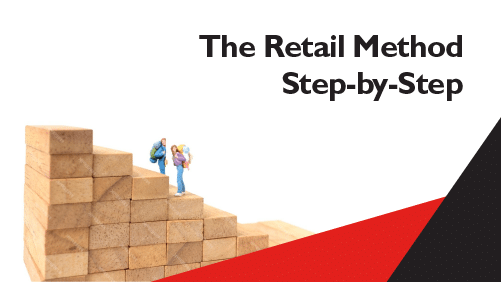
The Retail Method Step-by-Step
- Determine Cost of Goods Available for Sale: This includes the total cost of inventory available before sales are deducted.
Formula: Beginning Inventory (Cost) + Purchases (Cost) = Total Cost of Goods Available
- Determine the Cost-to-Retail Ratio: The cost percentage relative to the retail price.
Formula: (Total Cost of Goods Available ÷ Total Retail Value of Goods Available) × 100 = Cost-to-Retail Ratio
- Calculate Estimated Ending Inventory: Apply the cost-to-retail ratio to the ending inventory at retail.
Formula: Ending Inventory at Retail × Cost-to-Retail Ratio = Estimated Ending Inventory (Cost)
Example: Let’s say a clothing store tracks inventory as follows.
- Beginning Inventory (Cost): $5,000
- Purchases (Cost): $10,000
- Total Cost of Goods Available: $15,000
- Beginning Inventory (Retail): $10,000
- Purchases (Retail): $20,000
- Total Retail Value of Goods Available: $30,000
- Retail Sales (Revenue): $20,000
- Estimated Ending Inventory (Retail): $10,000
First, determine the cost of goods available for sale:
Beginning Inventory (Cost) + Purchases (Cost) = Total Cost of Goods Available
$5,000 + $10,000 = $15,000
Now, calculate the cost-to-retail ratio:
(Total Cost of Goods Available ÷ Total Retail Value of Goods Available) × 100 = Cost-to-Retail Ratio
$15,000 ÷ $30,000 x 100 = 50%
Finally, estimate the ending inventory (cost):
Ending Inventory at Retail × Cost-to-Retail Ratio = Estimated Ending Inventory (Cost)
$10,000 × 50% = $5,000
Using This Method With Physical Stocktakes
As mentioned earlier, the retail inventory method only provides an estimate.
It works best when combined with regular physical stocktakes.
Physical counts
- Catch shrinkage, theft, or errors in tracking.
- Adjust estimates if markups or discounts change frequently.
- Comply with tax and reporting requirements for some financial reports.
How Does the Retail Method Differ From Standard Retail Accounting?
The retail inventory method uses a cost-to-retail ratio to estimate inventory value based on sales and markup percentages.
It’s quick but less precise.
Standard retail accounting tracks each item’s exact purchase cost, sales price, and inventory movement.
It’s more accurate but requires detailed record-keeping and regular stocktakes.
Retailers often use the retail inventory method for interim estimates and combine it with standard accounting for accurate financial reporting.

The Benefits of Retail Accounting
- Better Financial Reporting: Accurate records help you track sales, expenses, and inventory, giving you a clear picture of your business’s financial health.
- Improved Decision-Making: Knowing your numbers lets you plan for growth, adjust pricing, and manage cash flow effectively.
- More Accurate Profit Calculations: By correctly tracking the Cost of Goods Sold (COGS) and expenses, you get a true picture of your profitability.
- Easier Tax Preparation: Keeping organised records makes it easier to lodge GST and BAS reports, reducing stress at tax time.
- Help Securing Business Loans: Lenders are likelier to approve loans or credit to businesses with well-documented, current financial records.
- Compliance with the Australian Accounting Standards Board (AASB): Staying compliant avoids legal issues and ensures your financial reports meet required regulations.
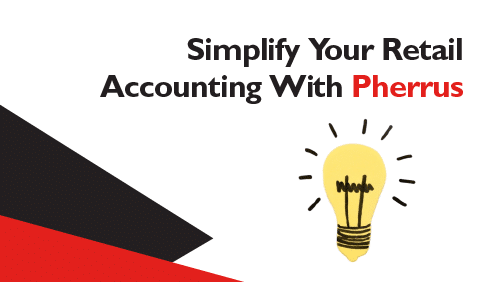
Simplify Your Retail Accounting With Pherrus
What is retail in accounting terms?
It’s the answer to your retail business’s success!
Proper retail accounting will help you make smarter business decisions to maximise profits and keep your finances stress-free!
But accounting can be difficult to manage while you’re running your business.
Let the experts at Pherrus Financial Services help!
We specialise in retail accounting and bookkeeping, from financial reporting to taxation compliance.
Call (02) 9099 9109 to book an appointment with a Pherrus accountant at our Bella Vista office in Sydney.
Alternatively, complete this online form, and we’ll contact you shortly.
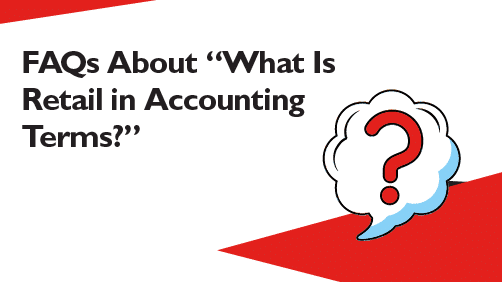
FAQs About “What Is Retail in Accounting Terms?”
What Does Retail Mean in Accounting?
In accounting, retail refers to the financial processes involved in selling goods directly to consumers.
This includes tracking sales, expenses, inventory, and profits to ensure accurate financial reporting and compliance with tax obligations.
Retail accounting helps businesses manage cash flow, calculate profit margins, and maintain stock levels.
What Is the Retail Method in Accounting?
The retail inventory method estimates the value of a retailer’s stock using a cost-to-retail ratio.
Instead of tracking individual item costs, it calculates inventory value based on sales and markup percentages.
This method provides a quick way to estimate stock levels for financial reporting, tax calculations, and insurance claims, but it’s less precise than physical stocktakes and detailed cost tracking.
What Is the Formula for the Retail Method?
- Determine Cost of Goods Available for Sale: Beginning Inventory (Cost) + Purchases (Cost) = Total Cost of Goods Available
- Determine the Cost-to-Retail Ratio: (Total Cost of Goods Available ÷ Total Retail Value of Goods Available) × 100 = Cost-to-Retail Ratio
- Calculate Estimated Ending Inventory: Ending Inventory at Retail × Cost-to-Retail Ratio = Estimated Ending Inventory (Cost)


